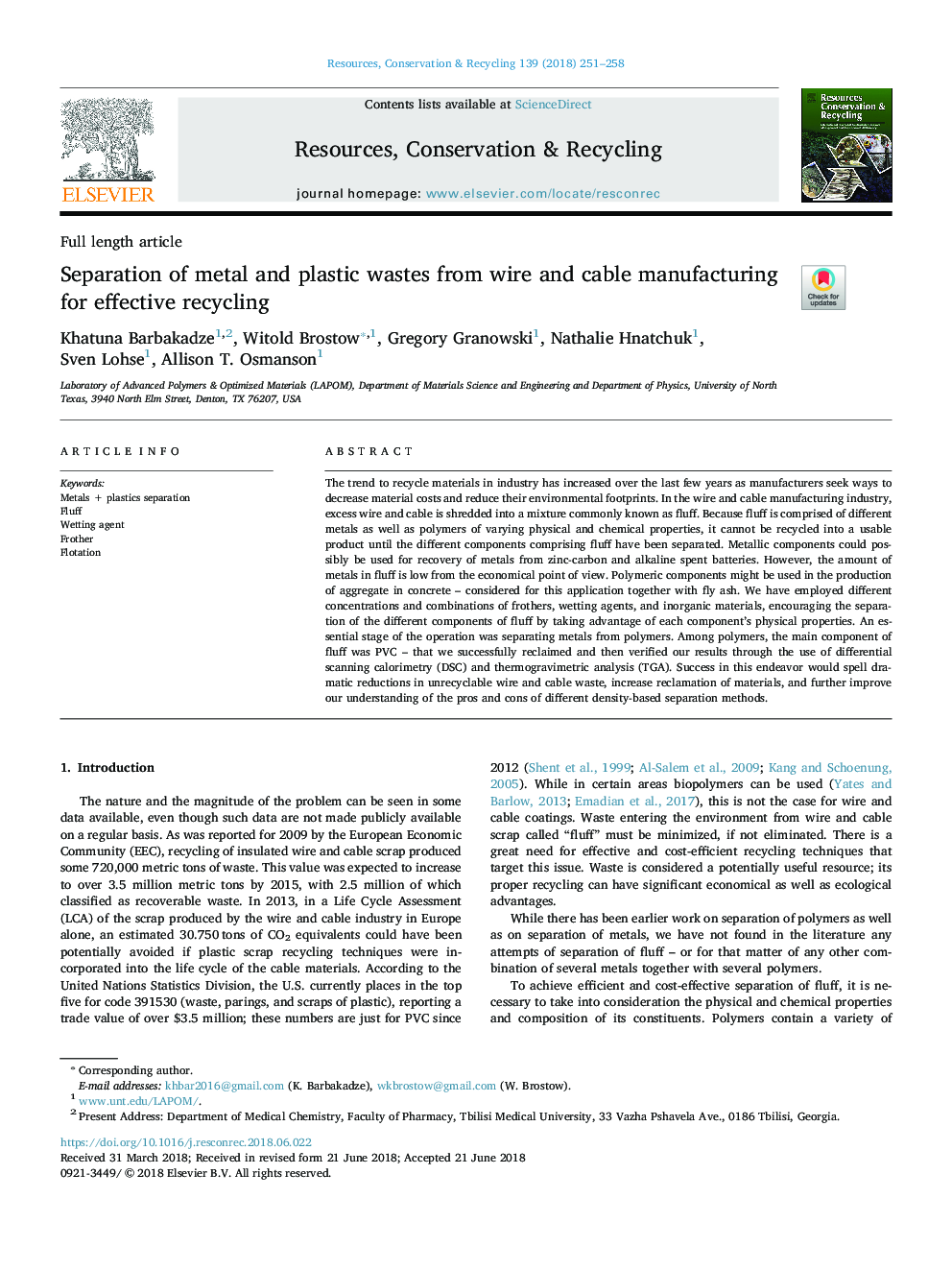| Article ID | Journal | Published Year | Pages | File Type |
|---|---|---|---|---|
| 11005406 | Resources, Conservation and Recycling | 2018 | 8 Pages |
Abstract
The trend to recycle materials in industry has increased over the last few years as manufacturers seek ways to decrease material costs and reduce their environmental footprints. In the wire and cable manufacturing industry, excess wire and cable is shredded into a mixture commonly known as fluff. Because fluff is comprised of different metals as well as polymers of varying physical and chemical properties, it cannot be recycled into a usable product until the different components comprising fluff have been separated. Metallic components could possibly be used for recovery of metals from zinc-carbon and alkaline spent batteries. However, the amount of metals in fluff is low from the economical point of view. Polymeric components might be used in the production of aggregate in concrete - considered for this application together with fly ash. We have employed different concentrations and combinations of frothers, wetting agents, and inorganic materials, encouraging the separation of the different components of fluff by taking advantage of each component's physical properties. An essential stage of the operation was separating metals from polymers. Among polymers, the main component of fluff was PVC - that we successfully reclaimed and then verified our results through the use of differential scanning calorimetry (DSC) and thermogravimetric analysis (TGA). Success in this endeavor would spell dramatic reductions in unrecyclable wire and cable waste, increase reclamation of materials, and further improve our understanding of the pros and cons of different density-based separation methods.
Keywords
Related Topics
Physical Sciences and Engineering
Energy
Renewable Energy, Sustainability and the Environment
Authors
Khatuna Barbakadze, Witold Brostow, Gregory Granowski, Nathalie Hnatchuk, Sven Lohse, Allison T. Osmanson,
